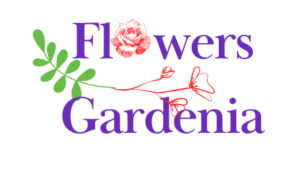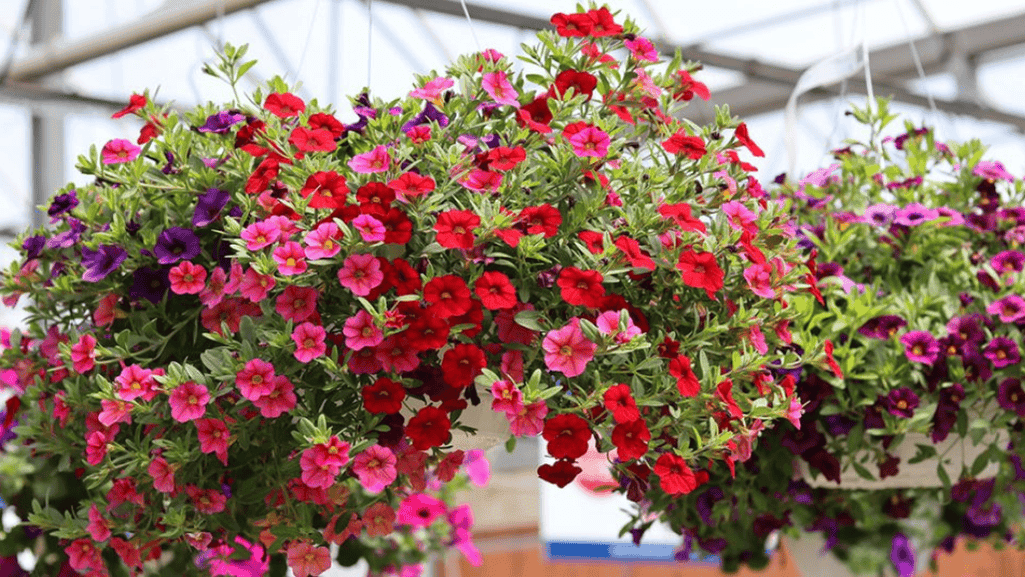
Beautiful flowers gardenia Plants For Your homes

Adding elegance and charm to your outdoor space is easy with the right hanging basket plants. Vibrant petunias, robust geraniums, and exotic fuchsias are top picks. They can turn your porch, balcony, or pergola into a colorful display.
Looking for sun-loving basket bloomers or shade-tolerant basket blossoms? There’s a perfect mix of cascading plant varieties for you. They’ll add beauty and texture to your space.
Creating the perfect hanging basket takes thought. You need to think about plant growth, water, light, and looks. By picking low-maintenance hanging plants with matching colors and textures, you’ll have a thriving garden. It will impress everyone and give you joy.
From long-flowering hanging basket picks to colorful hanging basket fillers, the options are endless. You can make stunning container gardening and patio plants and balcony flowers that catch the eye.
Choosing the right flowers is key for stunning hanging baskets. These flowers add vibrant colors and delicate cascades. They turn your hanging baskets into a captivating display. Let’s explore some of the best options for your hanging garden.
Trailing petunias, like Wave Petunias, are loved for their cascading colors. They bloom from spring until the first frost. They thrive in full sun and well-draining soil.
With a wide range of colors and patterns, petunias are versatile. They fit any hanging basket design.
Geraniums, especially ivy geraniums, are tough and fragrant. They handle heat and neglect well. They’re perfect for busy gardeners.
These plants have large, bold blooms in vibrant colors. They’re great for upright hanging baskets. Pelargoniums, a type of geranium, are known for their vibrant flower clusters and easy-going nature.
Trailing fuchsias add elegance with their exotic, drooping flowers. They bloom in summer and add color to hanging baskets. Fuchsias prefer partial shade and regular watering.
Begonias, especially trailing begonias, are perfect for shady spots. They bloom early in spring and thrive through the seasons. They need well-draining soil and consistent moisture.
Lobelia erinus has delicate, trailing flowers. They add a cascade of blue, white, and purple to hanging baskets. They prefer cooler temperatures and partial shade.
Lobelia cascades elegantly over containers. It blooms even in warmer climates.
| Flower | Sunlight | Watering | Bloom Time |
|---|---|---|---|
| Petunias | Full sun | Regular | Spring to frost |
| Geraniums | Full sun to partial shade | Regular | Summer |
| Fuchsias | Partial shade | Regular | Summer |
| Begonias | Partial to full shade | Regular | Spring to fall |
| Lobelia | Partial shade | Regular | Summer |
By using these essential flowers, your hanging baskets will be stunning. Mix and match these varieties for a balanced display. Your hanging baskets will bloom all season long.
Creating a stunning hanging basket is more than picking pretty flowers. You need to think about plant combinations, growth habits, water needs, and light. By choosing and arranging plants wisely, your basket will be the neighborhood’s favorite.
For a beautiful hanging basket, mix plants with different growth habits. Trailing plants like calibrachoa or lobelia spill over the sides. Upright plants, such as petunias or geraniums, add height and structure. This mix creates a lush, eye-catching display.
It’s important to pick plants that need the same water and light. Don’t mix sun-loving plants with shade-loving ones. Instead, choose plants that do well in the same conditions.
Sun-loving plants like calibrachoa, verbena, and osteospermum are great together. They all need full sun and well-draining soil. For shadier spots, begonias, fuchsias, and lobelia are good choices. They prefer cooler temperatures and consistent moisture. This way, your hanging basket design will thrive and be easy to care for.
The “thriller, filler, spiller” technique is a great way to make stunning hanging baskets. Choose a tall, eye-catching plant as the “thriller” for the center. Use mid-sized “filler” plants around it for volume and texture. Finish with “spiller” plants to cascade over the edges.
Here are some winning combinations:
| Thriller | Filler | Spiller |
|---|---|---|
| Geranium ‘Caliente Deep Red’ | Calibrachoa ‘Superbells Lemon Slice’ | Lobularia ‘Snow Princess’ |
| Begonia ‘Nonstop Mocca Deep Orange’ | Iresine ‘Purple Lady’ | Helichrysum ‘White Licorice’ |
| Fuchsia ‘Gartenmeister Bonstedt’ | Heuchera ‘Georgia Peach’ | Lysimachia ‘Goldilocks’ |
By following these tips and choosing plants with the right colors, textures, and growth habits, you’ll create a stunning display. Your hanging baskets will be a source of pride and enjoyment all season.
To keep your hanging baskets looking great, follow some key tips. These include regular watering, fertilizing, pruning, pest control, soil care, and rotation. These steps help your plants thrive and keep blooming beautifully.
Hanging baskets need more water than ground-planted flowers because they dry out faster. Water them every 2-3 days in cooler weather and once a day in summer. In very hot or windy weather, you might need to water them twice a day. Smaller baskets dry out faster because they have less soil. For more tips on watering, visit https://dennis7dees.com/hanging-basket-success/.
Fertilizing your hanging baskets is key to keeping them full and vibrant. Since they get watered often, they need regular feeding to keep nutrients in the soil. Use a water-soluble fertilizer every two weeks or mix slow-release pellets into the soil at planting time.
Pruning your baskets means removing dead flowers and trimming long stems. This encourages more blooms and keeps your baskets looking neat. Some plants, like Calibrachoas and Begonias, don’t need deadheading. But others, like Geraniums and Petunias, do. Trimming your baskets once or twice a year also helps them look fuller.
Watch your baskets for pests like aphids and spider mites. If you see any, use a gentle water spray or mild insecticidal soap. For a natural way to fight aphids, try releasing ladybugs near your baskets. They eat aphids.
To keep your baskets healthy year after year, refresh the soil annually. Replace the top few inches of soil and mix in compost. This step helps your plants grow stronger and bloom more vibrantly next season.
Rotate your baskets every week to ensure even growth and flowering. This is especially important if only one side gets direct sunlight. Rotating helps all sides grow evenly and prevents one side from becoming leggy. Also, remember that plants in full sun need more water than those in shade.
| Maintenance Task | Frequency | Benefits |
|---|---|---|
| Watering | Daily to every 2-3 days, depending on conditions | Prevents soil from drying out and keeps plants hydrated |
| Fertilizing | Every 2 weeks with water-soluble fertilizer or mix slow-release pellets into soil at planting | Replenishes soil nutrients and promotes fuller, more vibrant baskets |
| Deadheading | As needed, depending on the plant variety | Encourages more blooms and enhances basket appearance |
| Trimming | Once or twice a season | Increases branching and creates a fuller appearance |
| Pest Control | Monitor regularly and treat as needed | Protects plants from damage and maintains their health |
| Soil Refreshing | Annually | Replenishes nutrients and promotes stronger growth |
| Rotation | Weekly | Ensures even growth and flowering, prevents leggy or sparse growth |
Expert advice is available for specific plant care needs, so don’t hesitate to reach out to your local garden center or experienced gardeners for personalized guidance on maintaining your beautiful hanging baskets.
Don’t just think flowers for hanging baskets. Edible hanging baskets are a great idea. You can grow cherry tomatoes, peas, and strawberries. They add beauty and fresh produce to your outdoor space.
Choose small varieties for hanging baskets. Cherry tomatoes grow in clusters and don’t need staking. Peas cascade over the basket with vibrant flowers. Strawberries grow in a trailing way and give multiple harvests.
Herbs like rosemary, thyme, and oregano are also good for hanging baskets. They love the quick-draining soil and don’t need much water. They add fragrance and fresh ingredients to your cooking.
To make your edible hanging baskets successful, remember a few things:
| Vegetable | Ideal Growing Conditions | Benefits of Growing in Hanging Baskets |
|---|---|---|
| Cherry Tomatoes | Full sun, well-draining soil | Compact growth, no staking required |
| Peas | Full sun to part shade, cool temperatures | Graceful trailing habit, decorative flowers |
| Strawberries | Full sun, well-draining soil, regular watering | Natural trailing growth, multiple harvests |
| Herbs (Rosemary, Thyme, Oregano) | Full sun, well-draining soil, drought-tolerant | Fragrant, compact growth, culinary use |
Adding trailing vegetables and herbs to hanging baskets makes a stunning vertical garden. Try different combinations and enjoy fresh produce from your hanging baskets.
Choosing the right spot for your hanging basket is key to its success. Think about sun exposure, height, wind protection, and how easy it is to get to. The best spot will make your hanging basket placement look great.
Plants need different amounts of sun. Petunias and geraniums love full sun, needing six hours of direct sunlight. But, fuchsias and begonias prefer partial shade, needing three to six hours of sunlight. Make sure you know what your plants need to get the right amount of light.
“Some popular perennial flowers do well in full sunlight, requiring hours of direct sunlight per day, while others are more sensitive to direct sunlight and may need some shade throughout the day to thrive.”
Too much sun can make plants fade or even die. So, it’s important to find the right balance.
Think about how easy it is to care for your basket when choosing its height. Hang baskets at eye level for easy access and to enjoy them fully. This way, you can water and care for them without needing a ladder. You might need:
Strong winds can harm plants and dry out the soil in hanging baskets. To keep your plants safe, hang baskets in sheltered spots. You can also use windbreaks to protect them from harsh winds.
Put your hanging baskets where you can see them every day. Near windows, walkways, or seating areas is perfect. This way, you can enjoy your plants and take care of them easily. Remember, hanging baskets rely only on the nutrients in the basket, not the soil around them.
| Watering Frequency | Factors Affecting Watering |
|---|---|
| More frequent during warmer seasons (e.g., summer) | Lighter soil mixes that drain quickly |
| Competition for water among multiple plants in the basket | Exposure to more wind, contributing to soil drying out faster |
By considering these factors, you can find the perfect spot for your hanging baskets. This will make your outdoor space beautiful and enjoyable.
Choosing the right flowers for hanging baskets can be fun. Million bells (Calibrachoa) and creeping jenny (Lysimachia) are top picks. They offer beautiful blooms and lush foliage, perfect for a stunning outdoor look.
Million bells, or Calibrachoa, are loved for their endless blooms. These small flowers come in many colors, from deep purples to bright yellows. They love full sun and well-draining soil, making them great for hanging baskets.
Recent stats show 31% of the best hanging basket flowers need full sun. Million bells grow 6 to 12 inches tall, fitting well in compact baskets. They’re also hardy in zones 9-11, making them adaptable to many climates.
Creeping jenny, or Lysimachia nummularia ‘Aurea’, is a favorite for hanging baskets. It’s known for its golden leaves that cascade over the basket. It adds a lush touch, perfect with flowering plants like purple flowers.
Creeping jenny is versatile, growing well in full sun or partial shade. It’s also low on water needs, fitting 77% of recommended plants. This makes it easy to care for in different spots.
| Plant Name | Sun Exposure | Mature Height | Hardiness Zones |
|---|---|---|---|
| Million Bells (Calibrachoa) | Full Sun | 6-12 inches | 9-11 |
| Creeping Jenny (Lysimachia) | Full Sun to Partial Shade | 6-12 inches | 3-9 |
Adding million bells and creeping jenny to your baskets creates a beautiful display. These plants bring vibrant blooms and lush foliage to your outdoor space. They’re sure to make your area look stunning all season long.
To make a hanging basket that will wow your neighbors, pick the right container, soil, and plants. Choose wisely and mix colors and textures well. This way, you’ll create a beautiful hanging basket that brightens up any outdoor area.
Make sure your container has holes for drainage to avoid root rot. Metal baskets with coconut fiber or moss are great for air and water flow. Plastic baskets are also good, but watch out for their weight when full.
Use a potting mix that drains well but holds moisture. A mix of peat moss, vermiculite, and perlite is perfect. Add slow-release fertilizers and water-absorbing crystals for extra moisture and nutrients.
Think about mixing colors and textures for a striking look. Pair bold flowers like Petunias with delicate foliage like Lobelia. Use the “thriller, filler, spiller” method for a balanced look.
| Plant Type | Examples | Characteristics |
|---|---|---|
| Thrillers | Dracaena marginata, Geranium ‘Designer Cherry’, Begonia ‘Nonstop Yellow’ | Tall, upright plants that add height and drama to the basket |
| Fillers | Impatiens ‘Victorian Lilac’, Tagetes ‘Lemon Gem’, Brachyscome iberidifolia | Mounding plants that fill in the gaps and provide a lush appearance |
| Spillers | Lobelia ‘Waterfall Blue’, Calibrachoa ‘Cabaret Purple’, Ipomoea batatas ‘Margarita’ | Trailing plants that cascade over the edges, softening the look of the basket |
By choosing the right container, soil, and plants, you can create a stunning hanging basket. Try different colors and textures to match your style and enhance your home’s look.
Hanging baskets are not just for flowers anymore. They’re great for growing edible hanging basket plants that look good and are useful. Since 1973, people have used hanging baskets for veggies, fruits, and herbs. This makes your garden look good and work well, even if you don’t have much space. RuralSprout says cherry tomatoes, strawberries, and herbs are top picks for hanging baskets.
Trailing cherry tomatoes are perfect for hanging baskets. They grow a lot and look great. “Tumbler” tomatoes are ready in just 49 days, making them a quick choice.
To grow well, your basket needs drainage holes and good air flow. This helps your plants grow strong and healthy.
Hanging basket strawberries are easy to grow and have fewer pests. Plant at least three in a 14-inch basket. Choose an ever-bearing variety for more harvests.
Strawberries need lots of sun, at least six hours a day. This helps them grow well.
Herbs like basil and thyme are great for fragrant hanging basket herbs. They love warm weather and lots of sun. This makes them perfect for forgetful gardeners.
When placed on the basket’s edges, these herbs spill over. They create a beautiful and fragrant display.
| Edible Plant | Ideal Variety for Hanging Baskets | Key Growing Tips |
|---|---|---|
| Cherry Tomatoes | “Tumbler” | Ensure proper drainage and airflow |
| Strawberries | Ever-bearing varieties | Plant at least 3 in a 14-inch or larger basket |
| Basil | Any variety | Provide warm temperatures and ample sunlight |
| Thyme | Cascading varieties | Place along basket edges for trailing effect |
When caring for your functional hanging basket plants, water them often. Do this up to twice a day when it’s hot. Fertilize every two to three weeks. Mix organic material into the soil for better moisture and nutrients.
By following these tips and picking the right plants, you’ll enjoy a great harvest all season.
Choosing the right hanging basket for your garden is exciting. There are many styles and materials to pick from. Lined baskets are popular, with 70% using coir liners for drainage. The other 30% use plastic baskets with holes for water to flow.
Black hanging baskets are loved for their wide tops, which hold water well. Stone-effect baskets are stylish and modern. They add a sleek look to any garden.
Bloom around baskets are great for a lush display. They have special ‘gates’ for planting from all sides. These baskets are perfect for plants like heucherella and Aztec sweet herb ‘Colada’. They also work well with trailing flowers like Thunbergia and Nasturtium ‘Orange Troika’.
In windy or exposed spots, wall baskets are best. They are strong and stable. Always use a strong wall bracket for suspended baskets to keep your plants safe.
Here are some popular materials and their benefits:
| Material | Benefits |
|---|---|
| Coconut fiber lined baskets | Good drainage, attractive, and absorb water |
| Moss lined baskets | Natural look, retain moisture, and drain well |
| Burlap lined baskets | Eco-friendly, biodegradable, and allow air circulation |
| Compressed fiber lined baskets | Durable, long-lasting, and keep shape |
| Plastic hanging baskets | Non-porous, retain moisture, and some have water reservoirs |
Choosing the right basket is key for your plants’ health. Most plants need daily moisture checks. They also need frequent watering, especially in summer. A well-draining basket is essential for their well-being.
Hanging baskets are the most popular containers for trailing plants due to their versatility and easy placement.
By picking the right basket and considering your plants’ needs, you can create a beautiful display. This will add joy to your outdoor space all season long.
Creating stunning hanging baskets is more than picking the right plants. To make sure your baskets thrive, avoid common mistakes. These errors can stop growth and reduce beauty. By avoiding these mistakes, you’ll create displays that will impress everyone.
One big mistake is overplanting. It’s tempting to fill your basket with many plants for a full look. But, this can cause overcrowding and slow growth. A good rule is to use one plant per inch of basket size.
For example, a 12 to 14-inch basket can hold 3 to 5 plants. A 16 to 18-inch basket can fit 5 to 7 plants. Adding trailing plants is okay too. This way, your plants can grow well and bloom more.
Another mistake is neglecting care, especially watering and fertilizing. Hanging baskets dry out fast, so they might need daily watering during dry spells. Start fertilizing 4-6 weeks after planting.
Use slow-release fertilizers in the compost and liquid feeds. Don’t just use liquid feeds, as they can wash away. Keeping up with watering and fertilizing will help your plants grow strong and bloom well.
Deadheading and pruning are key tasks often missed. Not removing spent blooms can make your baskets look messy and stop new flowers. Regularly pinch off dead flowers to keep blooming.
Also, prune your plants by one-third to one-half in the middle of the season. This keeps them bushy and fresh for the rest of the season. With regular deadheading and pruning, your baskets will look great all season.
By avoiding these common hanging basket mistakes and caring for your plants, you’ll get lush, vibrant baskets. A little extra effort will make your displays stunning. They will bring joy to you and your visitors all season.
Creating stunning hanging baskets means thinking about the seasons. Choose plants that do well in each time of year. Plan your garden in three-month chunks for blooms all year.
Enjoy spring’s fresh colors, summer’s heat-tolerant flowers, and fall’s cool-season blooms. This way, your hanging baskets will be a hit all year.
Spring is great for hanging baskets full of color and life. Hanging baskets are 3-4 months old by early spring. Plant them up by late May with a mix of basket stuffers and young annuals.
Pansies and violas are perfect for spring. They love cooler weather and add a splash of color.
Summer brings sun-loving flowers that can handle the heat. Geraniums, dragonwing begonias, and giant wax begonias are great for summer. So are scaevola, petunias, calibrachoa, portulaca, and lantana.
These plants bloom a lot and add color and texture. Remember to water them often, especially petunias which might need water twice a day on hot days.
| Plant | Watering Needs | Sunlight Requirements |
|---|---|---|
| Petunias | Twice daily on hot days | Full sun |
| Calibrachoa (Million Bells) | Regular watering | Full sun |
| Lantana | Tolerant of dry conditions | Full sun (6+ hours per day) |
As summer cools down, switch to fall-friendly flowers. Mums, ornamental kale, and pansies are great for fall. Create containers that turn into hanging baskets in late May for a long-lasting display.
With the right care, your fall baskets will keep blooming. They’ll add color and texture to your garden.
Proper care, feeding, watering, and pinching back plants regularly ensure they bloom all summer.
By using seasonal ideas, you can make your hanging baskets change with the seasons. They’ll be a hit in your neighborhood all year.
This hanging basket guide has shown the best flowers for hanging baskets. It covers stunning plant combinations, care, and design ideas. By choosing the right plants for sun, wind, and taste, you can make your outdoor space beautiful.
There are flowers for every spot, from sunny to shady areas. You can pick from bright sun flowers like petunias and geraniums. Or go for elegant shade plants like begonias and impatiens.
Adding plants that trail, foliage, and even edible plants like strawberries makes your baskets interesting. This adds depth and function to your hanging gardens.
Keeping your baskets in good shape is key. This means watering, fertilizing, pruning, and watching out for pests. By trying new containers, soil, and plants, you can keep your baskets looking fresh and exciting.
Creating hanging baskets is not just about making your space look good. It’s also a fun way to express your love for plants. With what you’ve learned, you can make baskets that will impress everyone and bring you joy.




